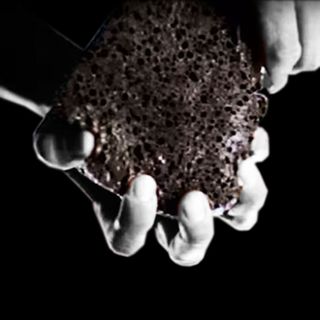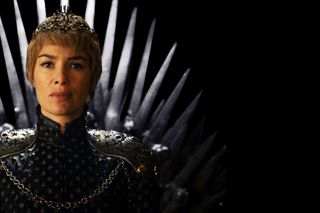
Narcissism Is a Diagnosable Illness, Not Just a Cultural Supervillain Trope
Cultural depictions of narcissists inspire fear and awe, rather than concern for their health.

There’s no love lost between vanity and a moralist society, which is why our most beloved cultural pastimes involve hating on celebrities that monetize their appearance; lapping up books, TV shows and movies about high-powered egomaniacs; and, chiding technologically forward generations for their conspicuous self-documentation. Narcissism, defined as having higher than normal levels of admiration for oneself, is thrown around as the cause of collective societal decline and the cause of entitlement in future generations.
However, narcissism is no mere vice. Narcissism manifests in human beings as a mental illness — narcissistic personality disorder (NPD) — identified by “a pattern of need for admiration and lack of empathy for others.” According to the Diagnostic and Statistical Manual – V, narcissism is identified by an intense need to seek approval from others, using others as a source for validation, lacking empathy, using intimacy for self-esteem regulation, boldness and to seeking attention. Narcissism can present as grandiose or exhibitionist, vulnerable or closeted, and malignant or exploitative. Narcissism is also split up by what methods the narcissist applies to get their way (overt or covert), and what they value the most about themselves (somatic or cerebral). Since a diagnosis of NPD will require a combination of all the above symptoms, people who have only one or two of the above traits can’t be diagnosed with NPD. However, the problem is, that barely anyone treats narcissistic traits as a possible sign of a disorder — narcissism, to most is just a bad quality, a cautionary tale to be less vain and more humble.
There’s enough reason to hate narcissists, yes; they’re known to lack empathy, they’re manipulative, overconfident, cruel — like when Dorian Gray from The Picture of Dorian Gray casts aside his fiancé Sybil Vane after her acting suffers, eventually causing her to commit suicide — and even prefer dictators to democracy. There are multiple popular forums dedicated to surviving the horror of interacting with narcissists, narcissist parents, and surviving abuse from a narcissist. What collective hatred for narcissistic behavior also does is both eclipse narcissism’s role as a personality disorder in the brain, and overlook what could’ve put it there. This is where the cultural portrayal of narcissism and narcissists fails — it builds a monster of mythical proportions, with consistent, homogenous malignance, and rarely dives into the core of why narcissists are the way they are and any possible help/support they can receive.
Narcissism’s roots in seeking validation could loop back to an individual’s self-esteem, as both depend extensively on external validation. However, the two differ, as self-esteem is at its lowest during adolescence, increasing through life and then dropping again at old age, while narcissism is at its peak during adolescence, and only decreases with age.
However, the association between the two is uncanny. Research has postulated that narcissistic traits decline significantly in the presence of positive long-term relationships with children, partners, and their career paths — as does low self-esteem. Narcissistic traits also increase significantly when faced with negative experiences and failure — which is also exemplified by its link to imposter syndrome, which involves feeling inadequate despite being successful. For people with NPD, feelings of inadequacy and the need for validation exist in high levels — rising when there’s a negative event and falling when positive life experiences occur.
Related on The Swaddle:
Study: Men Who Send Unsolicited Dick Pics Score Highly on Narcissism and Sexism
In culture, we prefer our narcissists to be megalomaniacs — preening their worst selves and stealing every scene from the level-headed, good protagonist — whether it be the murderous Wicked Queen from Snow White or the demanding Miranda Priestly from The Devil Wears Prada or even Regina George from Mean Girls. Narcissists in depictions like these are extremely cool; they’re powerful, accomplished and extremely cutting or manipulative to those who can’t keep up. Although these are all negative traits, they’re also aspirational — everyone wants to secretly land a good, mean, come-back, walk through hallways inspiring terror, and hold people in the thrall of their greatness.
Few of the more human portrayals of narcissism come from Mark Zuckerberg in The Social Network, which was a fictionalized account of Facebook’s early inception, and Cersei Lannister in the high-fantasy drama Game of Thrones. Both characters, while mined for their ability to create goosebump-inducing, extremely cool negativity, also betray vulnerabilities as their characters grow.
In The Social Network, Zuckerberg is entitled, manipulative and has a heightened sense of importance. He passes snide remarks to his then date, Erica, for studying at a college not as important as Harvard; he dismisses the achievements of, and ill-treats, his friend Eduardo Saverin; he steals a social networking website idea from the Winklevoss twins — eventually profiting greatly from it. He’s also incapable of communicating properly, repeatedly unable to keep a normal conversation going with Erica in the film’s opening scene, is deeply envious of the Winklevoss twins — mainly, their appearance and lifestyle — and is desperate to prove himself as better and different in order to join an exclusive student club at Harvard. He exalts his greatness, in order to camouflage his flaws — in the opening scene of the film, he’s seen referring to his exemplary SAT scores in order to deflect Erica’s questions about rowing crew, which is something he isn’t good at.
In Game of Thrones, Cersei sees herself as better than everyone around her — she emasculates her husband, King Robert Baratheon, by asking him if she should switch spots and take up the sword, while he becomes queen. She’s manipulative and self-focused, dwarfs literally world-ending concerns in the pursuit of her own interests, and is a complete menace; but, she’s also deeply emotionally attached to her family — devoting herself to protecting her children as long as they live, being vulnerable around her brothers and looking up to her father.
The importance of showcasing narcissistic characters as human rather than comic megalomaniacs is vital — as narcissists are still people suffering from a personality disorder, which both affect them and those around them. People with NPD must cope with intense, unstable emotions, mood swings, struggle with insecurity and vulnerability in the face of criticism, and even shame. Showcasing narcissists as megalomaniacs rather than people in need of mental health care furthers the legend of the cool, unapproachable narcissist as something to aspire to, rather than something that showcases discrepancies in regular mental function.
Related on The Swaddle:
Insider Peeks at Celeb Glamor Just Raise the Bar for Beauty
Greater awareness about NPD is also necessary to better understand narcissism, rather than just fear it. Just as society deeply enjoys watching a narcissist and aims to emulate a narcissist, it is also deeply hateful of the narcissist. While the reason for this hatred is commonly linked to the narcissist’s manipulative, cruel behaviors — this hatred, or ‘narcophobia,’ also could be due to wanting the same position of power as the narcissist. In Kristin Dombek’s book The Selfishness of Others, she explores the culture of fear and misinformation built against narcissists. Dombek writes of massive support groups that, in intense detail, describe their partners’ behaviors as narcissistic, with terms such as love-bombing (manipulation via excess love/affection) and silent treatment (not giving any attention; no communication) while providing little scientific basis.
The point of doing so could both be to help cope with distress at having encountered an actual narcissist, or to make it easier to absolve oneself of shame at losing equal power in a relationship due to multiple reasons that could often not involve a narcissist partner. As Gemma Sief puts it in the New York Times, “It’s easier to call yourself an empath than a bitter, jilted ex-lover, a pathetic loser or a self-saboteur.”
Dombek also writes of fear of narcissism as a form of narcissism — covering how the intense fear of anything can lead to a form of blindness when it comes to recognizing that very thing within oneself. If one believes their partner is a narcissist, their fervent seeking of validation for the same on an online forum might also be a narcissistic trait.
In her review of The Selfishness of Others in the New Yorker, Jia Tolentino writes, “Despite the label’s clinical connotations, identifying a narcissist remains a fundamentally subjective and intimate act … With the more debatable cases, who you are will generally determine whether or not you deem them pathological. Narcissists are not identified in a vacuum; the person you label a narcissist is usually someone who’s close to you, or a member of a tribe that you have been culturally encouraged or professionally incentivized to dislike.”
There’s much to mine, culturally, from narcissism — what it says about individuals, what it says about us all as a self-absorbed ecosystem, what must be done about the youth and their selfie cameras. It would bode well to re-consider the implications of using a personality disorder as a throwaway adjective, furthering a culture of canonizing ‘cool’ narcissistic behavior over encouraging narcissists to seek help, or dismissing certain people as narcissists — when the problem could have its roots in perception, often, one’s own.
Aditi Murti is a culture writer at The Swaddle. Previously, she worked as a freelance journalist focused on gender and cities. Find her on social media @aditimurti.
Related


How Does Shiv Roy From ‘Succession’ Incite Hatred, Pity, and Solidarity All At Once?
